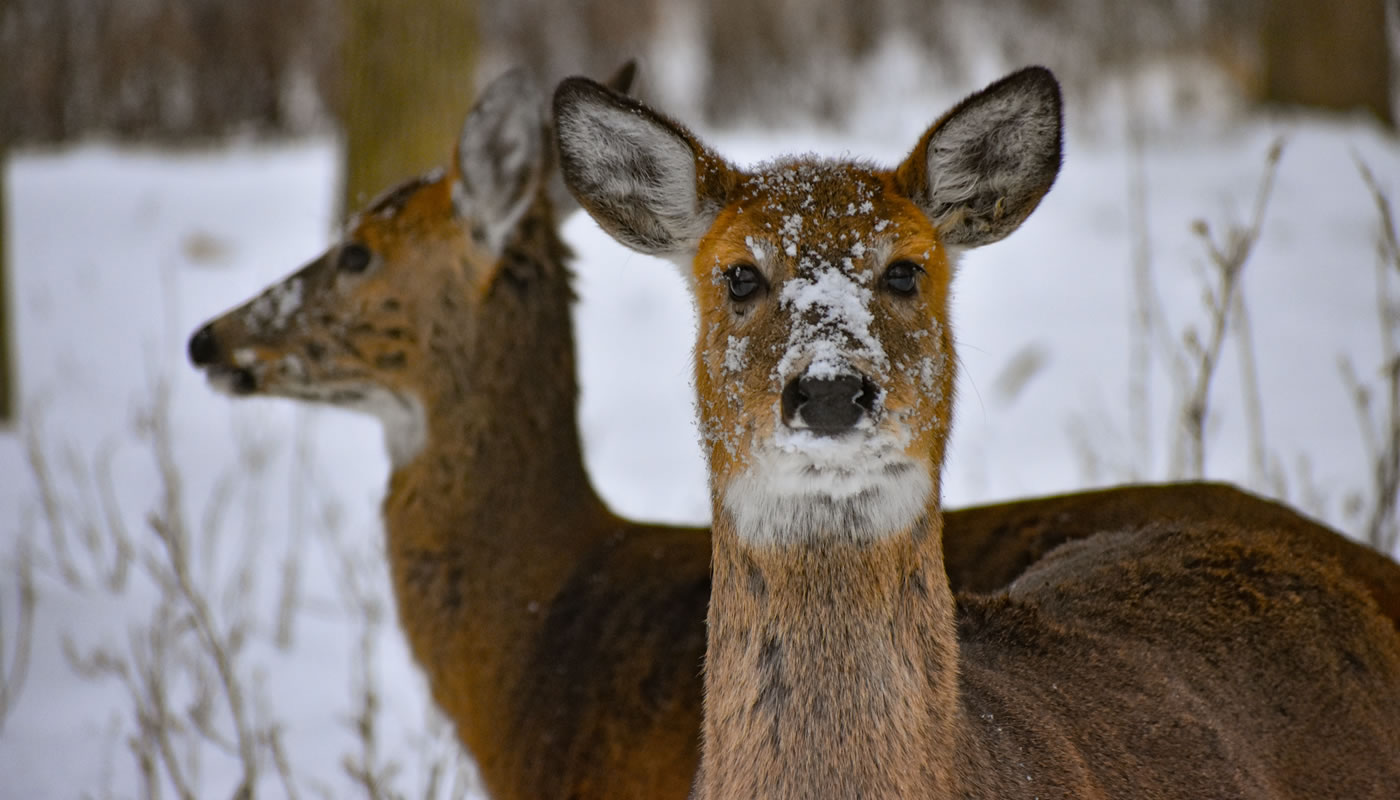Winter is a quiet, peaceful time in the Forest Preserves of Cook County. After weeks of busy preparation in fall for the impending cold weather, many animals are enjoying a long winter’s rest. But not all animals hibernate. A frequent, year-round sight throughout our nearly 70,000 acres is the white-tailed deer.
Throughout spring and summer, white-tailed deer enjoy a diet comprised largely of green plants, happily grazing on leaves, shrubs and grasses. Come fall, deer will ramp up their intake of higher-fat foods to increase reserves for winter. But what happens in winter, when most greenery and other food sources are scarce?
Thanks to their remarkable four-chamber stomach and a change to their gut’s microbiome, white-tailed deer can survive throughout winter consuming twigs and other woody vegetation. This material is extremely high in fiber though and hard to digest, requiring seasonal adaptations to derive nutrients.
After a deer eats woody vegetation, the food enters the stomach’s first chamber—called a rumen—where it is met with special species of bacteria that become present during the winter season.
“A rumen is just like a tank, and it’s full of flora and fauna (bacteria),” explains Chris Anchor, senior wildlife biologist with the Forest Preserves. “A deer has no ability to digest fiber any more than humans do. So, what happens is that the fiber deer eat goes in the rumen, and the flora and fauna in the rumen break the fiber down into sugars, and the bacteria eats the sugars.”
After the rumen’s bacteria eats the sugar, a frothy mixture is created—called a cud—which the deer regurgitates and begins chewing again before continuing with the digestion process. Ultimately, the deer eat the bacteria to extract nutrients from the woody vegetation!
Want to help deer? Don’t feed them!
Because of the microbiome adaptations in winter, feeding deer disrupts their ability to derive necessary nutrients from food sources found in nature and can cause significant harm to the animal. It’s also illegal. Want to learn more? Check out our page on feeding wildlife.

